Black And Decker QS880G Handleiding
Black And Decker
Schuurmachine
QS880G
Bekijk gratis de handleiding van Black And Decker QS880G (6 pagina’s), behorend tot de categorie Schuurmachine. Deze gids werd als nuttig beoordeeld door 44 mensen en kreeg gemiddeld 4.7 sterren uit 22.5 reviews. Heb je een vraag over Black And Decker QS880G of wil je andere gebruikers van dit product iets vragen? Stel een vraag
Pagina 1/6

1
1
3
2
General Safety Rules
WARNING! Read all instructions. Failure to follow all instructions listed below may
result in electric shock, fire and/or serious injury. The term “power tool” in all of the
warnings listed below refers to your mains-operated (corded) power tool or battery-
operated (cordless) power tool.
SAVE THESE INSTRUCTIONS
1) Work area safety
a) Keep work area clean and well lit.
Cluttered or dark areas invite accidents.
b) Do not operate power tools in explosive atmospheres, such as in the presence of
flammable liquids, gases or dust
. Power tools create sparks which may ignite the
dust or fumes.
c) Keep children and bystanders away while operating a power tool.
Distractions can
cause you to lose control
2) Electrical safety
a) Power tool plugs must match the outlet. Never modify the plug in any way. Do not
use any adapter plugs with earthed (grounded) power tools.
Unmodified plugs and
matching outlets will reduce risk of electric shock
b) Avoid body contact with earthed or grounded surfaces such as pipes, radiators,
ranges and refrigerators.
There is an increased risk of electric shock if your body is
earthed or grounded.
c) Do not expose power tools to rain or wet conditions.
Water entering a power tool
will increase the risk of electric shock
d) Do not abuse the cord. Never use the cord for carrying, pulling or unplugging the
power tool. Keep cord away from heat, oil, sharp edges or moving parts.
Damaged
or entangled cords increase the risk of electric shock.
e) When operating a power tool outdoors, use an extension cord suitable for
outdoor use.
Use of a cord suitable for outdoor use reduces the risk of electric shock.
3) Personal safety
a) Stay alert, watch what you are doing and use common sense when operating a
power tool. Do not use a power tool while you are tired or under the influence of
drugs, alcohol or medication.
A moment of inattention while operating power tool may
result in serious personal injury.
b) Use safety equipment. Always wear eye protection.
Safety equipment such as
dust mask, non-skid safety shoes, hard hat, or hearing protection used for appropriate
conditions will reduce personal injuries.
c) Avoid accidental starting. Ensure the switch is in the off-position before plugging
in.
Carrying power tools with your finger on the switch or plugging in power tools that
have the switch on invites accidents.
d) Remove any adjusting key or wrench before turning the power tool on.
A wrench
or a key left attached to a rotating part of the power tool may result in personal injury.
e) Do not overreach. Keep proper footing and balance at all times.
This enables better
control of the power tool in unexpected situations.
f) Dress properly. Do not wear loose clothing or jewelry. Keep your hair, clothing
and gloves away from moving parts.
Loose clothes, jewelry or long hair can be
caught in moving parts. Air vents often cover moving parts and should also be avoided.
g) If devices are provided for the connection of dust extraction and collection
facilities, ensure these are connected and properly used.
Use of these devices can
reduce dust-related hazards.
4) Power tool use and care
a) Do not force the power tool. Use the correct power tool for your application.
The
correct power tool will do the job better and safer at the rate for which it was designed.
b) Do not use the power tool if the switch does not turn it on and off.
Any power tool
that cannot be controlled with the switch is dangerous and must be repaired.
c) Disconnect the plug from the power source and/or the battery pack from the
power tool before making any adjustments, changing accessories, or storing
power tools.
Such preventive safety measures reduce the risk of starting the power tool
accidentally.
d) Store idle power tools out of the reach of children and do not allow persons
unfamiliar with the power tool or these instructions to operate the power tool.
Power tools are dangerous in the hands of untrained users.
e) Maintain power tools. Check for misalignment or binding of moving parts,
breakage of parts and any other condition that may affect the power tools
operation. If damaged, have the power tool repaired before use.
Many accidents
are caused by poorly maintained power tools.
f) Keep cutting tools sharp and clean.
Properly maintained cutting tools with sharp
cutting edges are less likely to bind and are easier to control.
g) Use the power tool, accessories and tool bits etc., in accordance with these
instructions and in the manner intended for the particular type of power tool,
taking into account the working conditions and the work to be performed.
Use of
the power tool for operations different from those intended could result in a hazardous
situation.
5) Service
a) Have your power tool serviced by a qualified repair person using only identical
replacement parts.
This will ensure that the safety of the power tool is maintained.
ADDITIONAL SAFETY RULES
WARNING: Some dust created by power sanding, sawing, grinding, drilling, and
other construction activities contains chemicals known to cause cancer, birth
defects or other reproductive harm. Some examples of these chemicals are:
• lead from lead-based paints,
• crystalline silica from bricks and cement and other masonry products,
• arsenic and chromium from chemically-treated lumber (CCA).
Your risk from these exposures varies, depending on how often you do this type of work. To
reduce your exposure to these chemicals: work in a well ventilated area, and work with
approved safety equipment, such as those dust masks that are specially designed to filter out
microscopic particles.
•Avoid prolonged contact with dust from power sanding, sawing, grinding, drilling,
and other construction activities. Wear protective clothing and wash exposed areas
with soap and water. Allowing dust to get into your mouth, eyes, or lay on the skin may
promote absorption of harmful chemicals.
WARNING: Use of this tool can generate and/or disburse dust, which may cause serious
and permanent respiratory or other injury. Always use NIOSH/OSHA approved respiratory
protection appropriate for the dust exposure. Direct particles away from face and body.
CAUTION: Wear appropriate personal hearing protection during use. Under some
conditions and duration of use, noise from this product may contribute to hearing
loss.
The label on your tool may include the following symbols.
V ..........................volts A..........................amperes
Hz ........................hertz W ........................watts
min ........................minutes ......................alternating current
......................direct current no ........................no load speed
..........................Class II Construction
........................
earthing terminal
........................safety alert symbol .../min ..................revolutions or
reciprocations per minute
First Aid Measures for Gel Components (QS880G Only)
If gel within the comfort grip becomes exposed and results in skin contact wash with soap
and water; for eye contact, flush with flowing water. If swallowed, seek medical attention.
Material Safety Data Sheet (MSDS) available from 1-800-544-6986.
Motor
Be sure your power supply agrees with nameplate marking. 120 Volts AC only means your
tool will operate on standard 60 Hz household power. Do not operate AC tools on DC. A
rating of 120 volts AC/DC means that your tool will operate on standard 60 Hz AC or DC
power. This information is printed on the nameplate. Lower voltage will cause loss of power
and can result in over-heating. All Black & Decker tools are factory-tested; if this tool does
not operate, check the power supply.
Extension Cords
When using an extension cord, be sure to use one heavy enough to carry the current your
product will draw. An undersized cord will cause a drop in line voltage resulting in loss of
power and overheating. The following table shows the correct size to use depending on cord
length and nameplate ampere rating. If in doubt, use the next heavier gage. The smaller the
gage number, the heavier the cord.
KEY INFORMATION YOU SHOULD KNOW:
• Regularly check wear on paper and replace worn paper.
• Do not push down—let the sander do the work.
• Extended drywall sanding is not recommended for this product.
VEA EL ESPAÑOL EN LA CONTRAPORTADA.
SAVE THIS MANUAL FOR FUTURE REFERENCE.
INSTRUCTIVO DE OPERACIÓN, CENTROS DE SERVICIO Y PÓLIZA DE GARANTÍA.
ADVERTENCIA: LÉASE ESTE INSTRUCTIVO ANTES DE USAR EL PRODUCTO.
INSTRUCTION
MANUAL
Catalog Numbers QS780,
QS800 and QS880G
Catalog Nos. QS780, QS800,QS880G Form No. 90501829 (APR ’06)
Copyright © 2006 Black & Decker Printed in China
BC
6
3
Functional Description -
Figure A
1. On/off switch
2. Sanding base
3. Paper clamp lever
4. Gel comfort grip (QS880G only)
5. Dust bag
1
1
1
1
1
1
1
1
1
1/
/
/
/
/
/
/
/
/
/4
4
4
4
4
4
4
4
4
4
S
S
S
S
S
S
S
S
S
Sh
h
h
h
h
h
h
h
h
he
e
e
e
e
e
e
e
e
ee
e
e
e
e
e
e
e
e
et
t
t
t
t
t
t
t
t
t
F
F
F
F
F
F
F
F
F
Fi
i
i
i
i
i
i
i
i
in
n
n
n
n
n
n
n
n
ni
i
i
i
i
i
i
i
i
is
s
s
s
s
s
s
s
s
sh
h
h
h
h
h
h
h
h
h
S
S
S
S
S
S
S
S
S
Sa
a
a
a
a
a
a
a
a
an
n
n
n
n
n
n
n
n
nd
d
d
d
d
d
d
d
d
de
e
e
e
e
e
e
e
e
er
r
r
r
r
r
r
r
r
rs
s
s
s
s
s
s
s
s
s
T
THANK
HANK YOU
YOU FOR
FOR CHOOSING
CHOOSING B
BLACK
LACK &
&D
DECKER
ECKER!
!
G
GO
OT
TO
OWWW
WWW.B
.BLACKAND
LACKAND D
DECKER
ECKER.
.COM
COM/N
/NEW
EWO
OWNER
WNER
T
TO
OREGISTER
REGISTER YOUR
YOUR NEW
NEW PRODUCT
PRODUCT.
.
BEFORE RETURNING THIS PRODUCT
FOR ANY REASON PLEASE CALL
1-800-544-6986
BEFORE YOU CALL, HAVE THE CATALOG No. AND DATE CODE AVAILABLE. IN MOST CASES, A
BLACK & DECKER REPRESENTATIVE CAN RESOLVE THE PROBLEM OVER THE PHONE. IF YOU HAVE A
SUGGESTION OR COMMENT, GIVE US ACALL. YOUR FEEDBACK IS VITAL TO BLACK & DECKER.
3
D
A4
5
Minimum Gage for Cord Sets
Volts Total Length of Cord in Feet
120V 0-25 26-50 51-100 101-150
240V 0-50 51-100 101-200 201-300
Ampere Rating
More Not more American Wire Gage
Than Than
0 - 6 18 16 16 14
6 - 10 18 16 14 12
10 - 12 16 16 14 12
12 - 16 14 12 Not Recommended

WARNING: The use of any accessory not recommended for use with this tool could be
hazardous.
TROUBLESHOOTING
Problem Possible Cause Possible Solution
• Unit will not start. • Cord not plugged in. • Plug tool into a working
outlet.
• Circuit fuse is blown. • Replace circuit fuse.
(If the product repeatedly
causes the circuit fuse to
blow, discontinue use
immediately and have it
serviced at a Black & Decker
service center or authorized
servicer.)
• Circuit breaker is tripped. • Reset circuit breaker.
(If the product repeatedly
causes the circuit breaker to
trip, discontinue use
immediately and have it
serviced at a Black & Decker
service center or authorized
servicer.)
• Cord or switch is damaged. • Have cord or switch
replaced at Black & Decker
Service Center or Authorized
Servicer.
For assistance with your product, visit our website www.blackanddecker.com for the
location of the service center nearest you or call the BLACK & DECKER help line at
1-800-544-6986.
Service Information
All Black & Decker Service Centers are staffed with trained personnel to provide customers
with efficient and reliable power tool service. Whether you need technical advice, repair, or
genuine factory replacement parts, contact the Black & Decker location nearest you. To find
your local service location, refer to the yellow page directory under "Tools—Electric" or call:
1-800-544-6986 www.blackanddecker.comor visit
Full Two-Year Home Use Warranty
Black & Decker (U.S.) Inc. warrants this product for two years against any defects in material
or workmanship. The defective product will be replaced or repaired at no charge in either of
two ways.
The first, which will result in exchanges only, is to return the product to the retailer from whom
it was purchased (provided that the store is a participating retailer). Returns should be made
within the time period of the retailer’s policy for exchanges (usually 30 to 90 days after the
sale). Proof of purchase may be required. Please check with the retailer for their specific
return policy regarding returns that are beyond the time set for exchanges.
The second option is to take or send the product (prepaid) to a Black & Decker owned or
authorized Service Center for repair or replacement at our option. Proof of purchase may be
required. Black & Decker owned and authorized Service Centers are listed under "Tools-
Electric" in the yellow pages of the phone directory and available on our website
www.blackanddecker.com.
This warranty does not apply to accessories. This warranty gives you specific legal rights and
you may have other rights which vary from state to state. Should you have any questions,
contact the manager of your nearest Black & Decker Service Center. This product is not
intended for commercial use.
Free warning label replacement: If your warning labels become illegible or are missing, call
1-800-544-6986 for a free replacement.
See ‘Tools-Electric’
– Yellow Pages –
for Service & Sales
Black & Decker (U.S.) Inc.,
701 E. Joppa Rd.
Towson, MD 21286 U.S.A.
E
8
7
Sanding
Lead based paint
Sanding of lead based paint is NOT RECOMMENDED due to the difficulty of controlling the
contaminated dust. The greatest danger of lead poisoning is to children and pregnant
women.
Since it is difficult to identify whether or not a paint contains lead without a chemical
analysis, we recommend the following precautions when sanding any paint:
Personal safety
• No children or pregnant women should enter the work area where the paint sanding is
being done until all clean up is completed.
• A dust mask or respirator should be worn by all persons entering the work area. The filter
should be replaced daily or whenever the wearer has difficulty breathing.
NOTE: Only those dust masks suitable for working with lead paint dust and fumes should
be used. Ordinary painting masks do not offer this protection. See your local hardware
dealer for the proper (NIOSH approved) mask.
• NO EATING, DRINKING or SMOKING should be done in the work area to prevent
ingesting contaminated paint particles. Workers should wash and clean up BEFORE
eating, drinking or smoking. Articles of food, drink, or smoking should not be left in the work
area where dust would settle on them.
Environmental safety
• Paint should be removed in such a manner as to minimize the amount of dust generated.
• Areas where paint removal is occurring should be sealed with plastic sheeting of 4 mils
thickness.
• Sanding should be done in a manner to reduce tracking of paint dust outside the work
area.
Cleaning and disposal
• All surfaces in the work area should be vacuumed and thoroughly cleaned daily for the
duration of the sanding project. Vacuum filter bags should be changed frequently.
• Plastic drop cloths should be gathered up and disposed of along with any dust chips or
other removal debris. They should be placed in sealed refuse receptacles and disposed of
through regular trash pick-up procedures. During clean up, children and pregnant women
should be kept away from the immediate work area.
• All toys, washable furniture and utensils used by children should be washed thoroughly
before being used again.
ASSEMBLY
WARNING: To reduce the risk of injury, make sure that the tool is switched off and
unplugged before performing any of the following assembly.
Fitting sanding sheets (fig. B )
• Soften the sanding sheet by rubbing its non-abrasive side over the edge of a work table.
• Press the paper clamp levers (3) upwards to release them from the retaining grooves and
open the paper clamps by pressing them down.
• Place the sheet onto the sanding base.
• Insert the edge of the sanding sheet into the front paper clamp as shown.
• Press the front paper clamp lever (3) downwards and locate it in the retaining groove.
• While keeping a slight tension on the sheet, insert the rear edge of the sheet into the rear
paper clamp.
• Press the rear paper clamp lever (3) downwards and locate it in the retaining groove.
Punching sanding sheets (fig. C)
The paper punch (6) is used for punching dust extraction holes in sanding sheets without
pre-punched holes.
Fit a sanding sheet.
• Hold the tool in position right above the paper punch (6).
• Press the tool with the sanding base (2) down into the paper punch.
• Take the tool off the paper punch and check whether the holes in the sanding sheet have
been fully pierced.
OPERATION
WARNING: To reduce the risk of injury, let the tool work at its own pace. Do not
overload.
Switching on and off (fig. D)
• To switch the tool on, press the part of the on/off switch (1) marked 'I'.
• To switch the tool off, press the part of the on/off switch (1) marked '0'.
Fitting and removing the dust bag
• Fit the dust bag (5) over the dust extraction outlet. To remove the dustbag, pull the
dustbag to the rear and off the outlet.
Connecting a vacuum cleaner (fig. E)
NOTE: Adaptor is an optional accessory, see “Service Information” to
order.
• Slide the adaptor (8) over the dust extraction outlet (7).
• Connect the hose of the vacuum cleaner to the adaptor.
NOTE: Ensure that the vacuum cleaner can be placed such that it will not tip over or
interfere with the motion of the sander. If this cannot be done, do not use the vacuum
cleaner. Turn on the vacuum cleaner before beginning to sand and turn it off after turning off
the sander. Empty vacuum cleaner as required.
Hints for optimum use
• Do not place your hands over the ventilation slots.
• Do not exert too much pressure on the tool.
• Regularly check the condition of the sanding sheet. Replace when necessary.
• Always sand with the grain of the wood.
• When sanding new layers of paint before applying another layer, use extra fine grit.
• On very uneven surfaces, or when removing layers of paint, start with a coarse grit. On
other surfaces, start with a medium grit. In both cases, gradually change to a fine grit for a
smooth finish.
Dust Extraction
WARNING: Fire hazard. Collected sanding dust from sanding surface coatings
(polyurethane, linseed oil, etc.) can self-ignite in sander dust bag or elsewhere and cause
fire. To reduce risk, empty canister frequently and strictly follow sander manual and coating
manufacturer's instructions.
WARNING: Fire hazard. When working on metal surfaces, do not use the dust canister or
a vacuum cleaner because sparks are generated. Wear safety glasses and a dust mask. Due
to the danger of fire, do not use your sander to sand magnesium surfaces. Do not use for wet
sanding.
MAINTENANCE
Your tool has been designed to operate over a long period of time with a minimum of
maintenance.
Continuous satisfactory operation depends upon proper tool care and regular cleaning.
• Clear the cooling vents and slots with a clean, dry paint brush.
• Clean the housing with a clean, damp cloth. Do not use solvents.
ACCESSORIES
Recommended accessories for use with your tool are available at extra cost from your local
dealer or authorized service center. If you need assistance in locating any accessory for your
tool, please call 1-800-544-6986.

Règles de sécurité générales
AVERTISSEMENT! Lire toutes les directives. Tout manquement aux directives
suivantes pose des risques de choc électrique, d’incendie et/ou de blessure grave.
Le terme « outil électrique » dans tous les avertissements ci-après se rapporte à
votre outil électrique à alimentation sur secteur (avec fil) ou par piles (sans fil).
CONSERVER CES DIRECTIVES
1) Sécurité du lieu de travail
a) Tenir la zone de travail propre et bien éclairée.
Les endroits sombres sont souvent
des causes d'accidents.
b) Ne pas faire fonctionner d’outils électriques dans un milieu déflagrant, soit en
présence de liquides inflammables, de gaz ou de poussière.
Les outils électriques
produisent des étincelles qui peuvent enflammer la poussière ou les vapeurs.
c) Éloigner les enfants et les curieux au moment d’utiliser un outil électrique.
Une
distraction pourrait vous en faire perdre la maîtrise.
2) Sécurité en matière d’électricité
a) Les fiches des outils électriques doivent correspondre à la prise. Ne jamais
modifier la fiche en aucune façon.
Ne jamais utiliser de fiche d’adaptation avec un
outil électrique mis à la terre. Le risque de choc électrique sera réduit par l’utilisation de
fiches non modifiées correspondant à la prise.
b) Éviter tout contact physique avec des surfaces mises à la terre comme des
tuyaux, des radiateurs, des cuisinières et des réfrigérateurs.
Le risque de choc
électrique est plus élevé si votre corps est mis à la terre.
c) Ne pas exposer les outils électriques à la pluie ou à d'autres conditions où il
pourrait être mouillé.
La pénétration de l’eau dans un outil électrique augmente le
risque de choc électrique.
d) Ne pas utiliser abusivement le cordon d’alimentation. Ne jamais utiliser le cordon
pour transporter, tirer ou débrancher un outil électrique. Tenir le cordon éloigné
de la chaleur, de l’huile, des bords tranchants ou des pièces mobiles.
Les cordons
endommagés ou emmêlés augmentent les risques de choc électrique.
e) Pour l’utilisation d’un outil électrique à l’extérieur, se servir d’une rallonge
convenant à une telle utilisation.
L’utilisation d’une rallonge conçue pour l’extérieur
réduit les risques de choc électrique.
3) Sécurité personnelle
a) Être vigilant, surveiller le travail effectué et faire preuve de jugement lorsqu’un
outil électrique est utilisé. Ne pas utiliser d’outil électrique en cas de fatigue ou
sous l’influence de drogues, d’alcool ou de médicaments.
Un moment d’inattention,
durant l’utilisation d’un outil électrique, peut se solder par des blessures graves.
b) Utiliser un équipement de sécurité. Toujours porter une protection oculaire.
L’utilisation d’un équipement de sécurité comme un masque anti-poussières, des
chaussures antidérapantes, un casque de sécurité ou des protecteurs auditifs lorsque la
situation le requiert réduira les risques de blessures corporelles.
c) Attention de ne pas mettre en marche l’outil accidentellement. S’assurer que
l’interrupteur est en position d’arrêt avant tout branchement.
Transporter un outil
électrique alors que le doigt est sur l’interrupteur ou brancher un outil électrique alors
que l’interrupteur est en position de marche risque de causer un accident.
d) Retirer toute clé de réglage ou clé standard avant de démarrer l’outil.
Une clé
standard ou une clé de réglage attachée à une partie pivotante peut causer des
blessures.
e) Ne pas trop tendre les bras. Conserver son équilibre en tout temps.
Cela permet de
mieux maîtriser l’outil électrique dans les situations imprévues.
f) S’habiller de manière appropriée. Ne pas porter de vêtements amples ni de bijoux.
Maintenir cheveux, vêtements et gants éloignés des pièces mobiles.
Les vêtements
amples, bijoux ou cheveux longs pourraient s'enchevêtrer dans les pièces mobiles.
g) Si des composants sont fournis pour le raccordement de dispositifs de
dépoussiérage et de ramassage, s’assurer que ceux-ci sont bien raccordés et
utilisés.
L’utilisation de ces dispositifs peut réduire les risques engendrés par les
poussières.
4) Utilisation et entretien d’un outil électrique
a) Ne pas forcer un outil électrique. Utiliser l’outil électrique approprié à
l’application.
L’outil électrique approprié effectuera un meilleur travail, de façon plus
sûre et à la vitesse pour laquelle il a été conçu.
b) Ne pas utiliser un outil électrique dont l’interrupteur est défectueux.
Tout outil
électrique dont l’interrupteur est défectueux est dangereux et doit être réparé.
c) Débrancher la fiche du secteur ou le bloc-piles de l’outil électrique avant de faire
tout réglage ou changement d’accessoire, ou avant de ranger l’outil électrique.
Ces mesures préventives réduisent les risques de démarrage accidentel de l’outil
électrique.
d) Ranger les outils électriques hors de la portée des enfants, et ne permettre à
aucune personne n’étant pas familière avec un outil électrique (ou son manuel
d’instruction) d’utiliser ce dernier
. Les outils électriques deviennent dangereux entre
les mains d’utilisateurs inexpérimentés.
e) Entretenir les outils électriques. Vérifier les pièces mobiles pour s’assurer
qu’elles sont bien alignées et tournent librement, qu’elles sont en bon état et ne
sont affectées par aucun trouble susceptible de nuire au bon fonctionnement de
l’outil électrique
.
En cas de dommage, faire réparer l’outil électrique avant toute
nouvelle utilisation.
Beaucoup d’accidents sont causés par des outils électriques mal
entretenus.
f) S’assurer que les outils de coupe sont aiguisés et propres.
Les outils de coupe
bien entretenus et affûtés sont moins susceptibles de se coincer et sont plus faciles à
contrôler.
g) Utiliser l’outil électrique, les accessoires, les mèches, etc., conformément aux
présentes directives et suivant la manière prévue pour ce type particulier d’outil
électrique, en tenant compte des conditions de travail et du travail à effectuer.
L’utilisation d’un outil électrique pour toute opération autre que celle pour laquelle il a
été conçu est dangereuse.
5) Réparation
a) Faire réparer l’outil électrique par un réparateur professionnel en n’utilisant que
des pièces de rechange identiques
. Cela permettra de maintenir une utilisation
sécuritaire de l’outil électrique.
RÈGLES DE SÉCURITÉ SUPPLÉMENTAIRES
AVERTISSEMENT : Certaines poussières produites par les activités de ponçage, de
sciage, de meulage, de perçage et autres activités de construction peuvent
contenir des produits chimiques pouvant causer le cancer, des anomalies
congénitales ou d'autres problèmes liés aux fonctions reproductrices. Voici
quelques exemples de ces produits chimiques :
• le plomb contenu dans les peintures à base de plomb;
• la silice cristalline provenant de la brique, du ciment et d'autres produits de
maçonnerie;
• l'arséniate de cuivre et de chrome provenant du bois traité chimiquement.
Les risques reliés à l'exposition à ces poussières varient selon la fréquence à laquelle
l’utilisateur travaille avec ce type de matériaux. Afin de réduire votre exposition à ces
produits chimiques : travailler dans un endroit bien ventilé et porter un équipement de
sécurité approuvé comme un masque anti-poussières conçu spécialement pour filtrer les
particules microscopiques.
•Éviter le contact prolongé avec les poussières produites par les activités de
ponçage, sciage, meulage, perçage et autres activités de construction. Porter des
vêtements de protection et laver les parties du corps exposées avec une solution
d'eau et de savon. Le fait de laisser la poussière pénétrer dans la bouche et les yeux ou
de la laisser reposer sur la peau, peut promouvoir l'absorption de produits chimiques
nocifs.
AVERTISSEMENT : L'utilisation de cet outil peut produire ou propulser des poussières
qui pourraient causer des problèmes respiratoires graves et permanents ou d'autres
problèmes médicaux. Toujours porter un appareil respiratoire approuvé par la
NIOSH/OSHA pour se protéger de la poussière. Diriger les particules loin du visage et du
corps.
MISE EN GARDE : Porter un pare-main anti-bruit pendant l’utilisation. Dans
certaines conditions et selon la durée d’utilisation, le bruit causé par ce produit peut
contribuer à une perte auditive.
L’étiquette apposée sur votre outil peut comprendre les symboles suivants.
V ....................................volts A..........................ampères
Hz ..................................hertz W ........................watts
min ..................................minutes ......................courant alternatif
................................courant continu no ........................vitesse à vide
....................................Assemblage de classe II ........................borne de terre
..................................symbole d’alerte à la .../min ..................min ou
sécurité alternances par minute
Premiers soins pour les composants en gel (QS880G seulement)
Si le gel à l’intérieur de la poignée s’échappe et entre en contact avec la peau, laver la
région touchée avec du savon et de l’eau; en cas de contact avec les yeux, rincer à l’eau
courante. En cas d’ingestion, consulter immédiatement un médecin.
Il est possible d’obtenir une fiche santé-sécurité (MSDS) en composant le 1-800-544-6986.
Moteur
S’assurer que le bloc d’alimentation est compatible avec l’inscription de la plaque
signalétique. 120 volts c.a. signifie seulement que l’outil fonctionnera sur une alimentation
domestique standard de 60 Hz. Ne pas faire fonctionner des outils à courant alternatif (c.a.)
sur un courant continu (c.c.). Un régime nominal de 120 volts c.a./c.c. signifie que votre outil
fonctionnera avec une alimentation standard 60 Hz c.a. ou c.c. Ce renseignement figure sur
la plaque signalétique. Une plus faible tension entraînera une baisse de régime, ce qui peut
entraîner une surchauffe. Tous les outils Black & Decker sont testés en usine; si cet outil ne
fonctionne pas, vérifier le bloc d’alimentation.
Rallonges
L’utilisation d’une rallonge conçue pour l’extérieur réduit les risques de choc électrique.
Lorsque qu’une rallonge électrique est utilisée, s’assurer d’en utiliser une de calibre
suffisamment élevé pour assurer le transport du courant nécessaire au fonctionnement de
votre appareil. Un cordon de calibre inférieur causera une chute de tension de ligne et donc
une perte de puissance et une
surchauffe. Le tableau suivant indique le calibre approprié à utiliser selon la longueur du
cordon et l’intensité nominale de la plaque signalétique. En cas de doute, utiliser le
calibre suivant le plus gros. Plus le numéro de calibre est petit, plus le cordon est lourd.
Description fonctionnelle – Figure A
1. Interrupteur Marche/Arrêt
2. Base de ponçage
3. Levier de pince à papier
4. Gel de la poignée tout confort (QS880G seulement)
5. Sac à poussière
Ponçage
Peinture à base de plomb
Le ponçage d’une peinture au plomb N’EST PAS RECOMMANDÉ en raison de la difficulté
entourant le contrôle de la poussière contaminée. Le danger le plus important
d’empoisonnement au plomb touche les enfants et les femmes enceintes.
Étant donné qu’il est difficile d’identifier si une peinture contient ou non du plomb sans une
analyse chimique, nous vous recommandons de suivre les précautions suivantes lors du
ponçage d’une peinture.
VOICI DES RENSEIGNEMENTS IMPORTANTS QU’IL VOUS FAUT
SAVOIR :
• Vérifier régulièrement l’usure du papier et le remplacer lorsqu’il est usé.
• Ne pas pousser l’outil vers le bas, le laisser effectuer le travail.
• Il n’est pas recommandé d’utiliser ce produit pour un ponçage prolongé de
cloisons sèches.
CONSERVER CE MODE D’EMPLOI POUR UN USAGE ULTÉRIEUR.
MODE
D’EMPLOI
AVANT DE RETOURNER CE PRODUIT POUR
QUELQUE RAISON QUE CE SOIT, COMPOSER LE
1-800-544-6986
AVANT D’APPELER, AYEZ EN MAIN LE N° DE CATALOGUE ET LE CODE DE DATE. DANS LAPLUPART
DES CAS, UN REPRÉSENTANT DE BLACK & DECKER PEUT RÉSOUDRE LE PROBLÈME PAR
TÉLÉPHONE. SI VOUS AVEZ UNE SUGGESTION OU UN COMMENTAIRE, APPELEZ-NOUS. VOS
IMPRESSIONS SONT CRUCIALES POUR BLACK & DECKER.
M
MERCI
ERCI D
D’
’A
AVOIR
VOIR CHOISI
CHOISI B
BLACK
LACK & D
& DECKER
ECKER !
!
V
VISITEZ
ISITEZ WWW
WWW.B
.B LACKAND
LACKANDD
DECKER
ECKER.
.COM
COM/N
/NEW
EWO
OWNER
WNER
POUR
POUR ENREGISTRER
ENREGISTRER VOTRE
VOTRE NOUVEAU
NOUVEAU PRODUIT
PRODUIT.
.
N° de catalogue QS780,
QS800 and QS880G
P
P
P
P
P
P
P
P
P
PO
O
O
O
O
O
O
O
O
ON
N
N
N
N
N
N
N
N
NC
C
C
C
C
C
C
C
C
CE
E
E
E
E
E
E
E
E
EU
U
U
U
U
U
U
U
U
US
S
S
S
S
S
S
S
S
SE
E
E
E
E
E
E
E
E
E
D
D
D
D
D
D
D
D
D
DE
E
E
E
E
E
E
E
E
E
F
F
F
F
F
F
F
F
F
FI
I
I
I
I
I
I
I
I
IN
N
N
N
N
N
N
N
N
NI
I
I
I
I
I
I
I
I
IT
T
T
T
T
T
T
T
T
TI
I
I
I
I
I
I
I
I
IO
O
O
O
O
O
O
O
O
ON
N
N
N
N
N
N
N
N
N
1
1
1
1
1
1
1
1
1
1/
/
/
/
/
/
/
/
/
/4
4
4
4
4
4
4
4
4
4
D
D
D
D
D
D
D
D
D
DE
E
E
E
E
E
E
E
E
E
F
F
F
F
F
F
F
F
F
FE
E
E
E
E
E
E
E
E
EU
U
U
U
U
U
U
U
U
UI
I
I
I
I
I
I
I
I
IL
L
L
L
L
L
L
L
L
LL
L
L
L
L
L
L
L
L
LE
E
E
E
E
E
E
E
E
E
Calibre minimum pour les rallonges
Volts Longueur totale du cordon en pieds
120 V 0-25 26-50 51-100 101-150
240 V 0-50 51-100 101-200 201-300
Intensité nominale
Plus Pas plus Calibrage américain normalisé des fils (AWG)
de de
0 - 6 18 16 16 14
6 - 10 18 16 14 12
10 - 12 16 16 14 12
12 - 16 14 12 Non recommandé
Product specificaties
| Merk: | Black And Decker |
| Categorie: | Schuurmachine |
| Model: | QS880G |
Heb je hulp nodig?
Als je hulp nodig hebt met Black And Decker QS880G stel dan hieronder een vraag en andere gebruikers zullen je antwoorden
Handleiding Schuurmachine Black And Decker

20 Juni 2023

14 Juni 2023

9 Juni 2023

7 Juni 2023

6 Juni 2023

6 Juni 2023

22 Mei 2023

20 Mei 2023

11 Mei 2023

10 Mei 2023
Handleiding Schuurmachine
- Bort
- Fein
- TAURUS Titanium
- NEO Tools
- Parkside
- Hikoki
- Powertec
- Biltema
- Stanley
- Powerplus
- Tacklife
- King Craft
- Hario
- Topcraft
- Graphite
Nieuwste handleidingen voor Schuurmachine
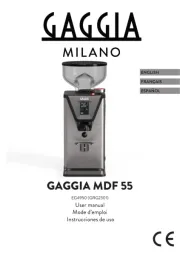
30 Juli 2025
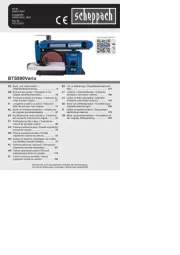
29 Juli 2025
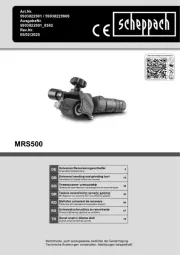
29 Juli 2025
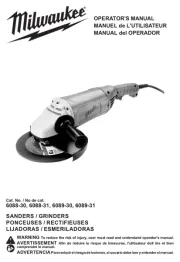
16 Juli 2025
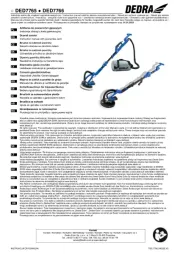
15 Juli 2025
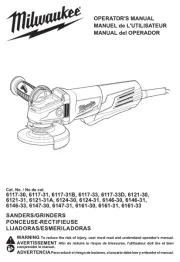
15 Juli 2025
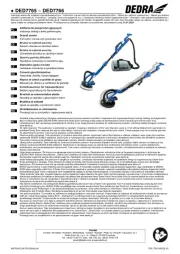
15 Juli 2025
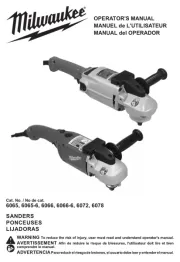
15 Juli 2025
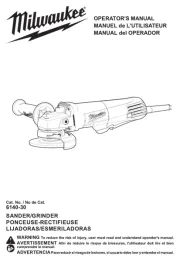
15 Juli 2025
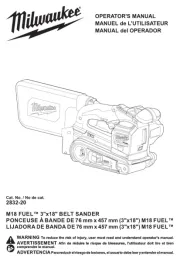
15 Juli 2025